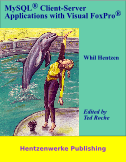Bill McGonigle hosted the September meeting the Dartmouth – Lake Sunapee Linux User Group, held as usual on the first Thursday of the month, but at a different location: the Dartmouth Regional Technology Center. Seven members attended.
The night was announced as “Nifties:” short presentations that hope to elicit from the audience just that reaction. Everyone present had something to show off:
I showed the S5 (Simple Standards-Based Slide Show System) developed by Eric Meyer of CSS fame. S5 used standards-compliant CSS, JavaScript and XHTML to generate a slide show with keyboard shortcuts, drop-down slide lists, handout and slideshow formats, additional notes and more. Free as in speech, free as in beer. Nifty!
Bill McGonigle showed off pfSense, following up on a blog entry he had written. pfSense is a spin-off of monowall, the xBSD-based firewall program. Bill talked about how to configure it off a read-only CR, with a small (512 Mb) USB fob holding the configuration file, running diskless on an older computer. The web interface was pretty slick, rich and intuitive, and exposed a huge number of options. Nifty!
Adam showed off some work he had been doing with WebSphere Community Edition (aka Apache Geronimo) and a commercial add-on that provided VT-400 terminal emulation via Java and a browser, to access some legacy machines he needs to maintain. Nifty!
I mentioned that TheOpenCD September 2007 edition was out and available via BitTorrent. We talked about some of the neat software on the disk. PDFCreator seemed most popular, but OpenOffice and WinSCP got good mentions, too. Nifty.
We did NOT mention the OpenEducationCD, a spin-off project, but that got mention at last week’s GNHLUG Board of Director’s meeting.
We talked quite a bit about the OLPC project and I showed off one of the videos available on the RedHat site to great acclaim. Not just “Nifty!” but “I want to work there!!!” There are more videos here, here and here.
Many interesting side discussions, too. Sorry if you missed it; it was a fun night.
 Followers of the Hentzenwerke Publishing empire know that Whil Hentzen has the largest catalog of Visual FoxPro books and an impressive collection of books bridging the gap from the Windows world into the Linux/Free/Open Source world. Whil’s been working for quite some time to put together a book on working with VFP and back-end data servers other than SQL Server. I was one of the many community members who contributed comments, criticisms and ideas to the book, and was honored when Whil chose to designate me as technical editor. Whil Hentzen announces,
Followers of the Hentzenwerke Publishing empire know that Whil Hentzen has the largest catalog of Visual FoxPro books and an impressive collection of books bridging the gap from the Windows world into the Linux/Free/Open Source world. Whil’s been working for quite some time to put together a book on working with VFP and back-end data servers other than SQL Server. I was one of the many community members who contributed comments, criticisms and ideas to the book, and was honored when Whil chose to designate me as technical editor. Whil Hentzen announces,